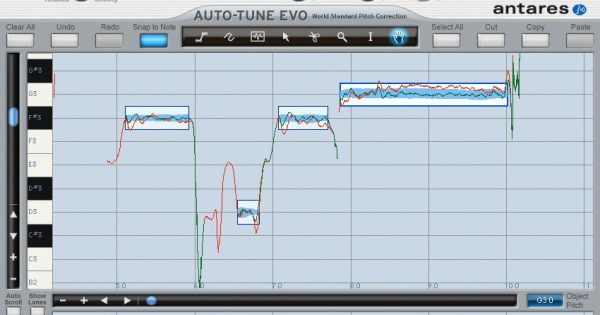

In the native versions of the plug‑in, this common area now also includes formant and throat‑modelling technology derived from the Avox 2 plug‑in bundle (reviewed in the October 2008 issue). This includes the return of the Tracking control: in Auto‑Tune 5 this had been relegated to the Options screen, a move which apparently proved unpopular with many users. The most obvious visual change has been the expansion of the common controls section along the top of the main window. If the tuning problems are more significant, the 'graphical' mode provides tools for editing indvidual notes via curves and lines.Īll these functions are retained in Evo, but they have been accompanied by some significant new features and a reorganisation of the user interface. An 'auto' mode provides easy‑to‑use, real‑time correction options and, if the original performance is pretty good in the first place, can often do the job with the minimum of fuss. All About EvoĪuto‑Tune Evo retains the basic dual‑mode operation of earlier releases. However, the new version is named Auto‑Tune Evo, and includes some significant new features. SOS reviewed Auto‑Tune 5 in a head‑to‑head with Celemony's plug‑in version of Melodyne in the March 2007 issue ( /sos/mar07/articles/at5vsmelodyne.htm), and Antares are now back with what is, in essence, Auto‑Tune 6. Of course, other companies were not going to let Antares have things all their own way, and alternatives from the likes of TC Electronic/TC Helicon and Celemony have certainly made their mark.

Antares were pioneers of this technology and Auto‑Tune became a clear industry standard soon after its release in 1997.
#Buy antares autotune evo software#
Love it or loathe it, pitch‑correction software is now a ubiquitous part of the modern computer‑based recording studio. Graphical editing now includes note objects as well as curves, and object-specific settings for the Retune speed. Does the latest Evo version keep the competition at bay?
#Buy antares autotune evo trial#
To wrap it up, users are advised to experiment with the functions of Auto-Tune Evo during the trial period and purchase a license if they are satisfied with its pitch correction capabilities.Auto-Tune has been the industry‑standard pitch‑correction tool ever since its 1997 release. The Options window brings extra settings that can be modified to change the buffer size, the total number of permitted undo actions, the bey bindings, and the window size. When using the interface buttons, one can create vibrato shape, adjust the amplitude and the formant amounts, along with the retune speed or the onset rate and variation. Users can select the one that best suits their necessities, to ensure all distortions are removed in a timely manner.

In order to accommodate the needs of a wide range of users, this plugin supports multiple types of input types, such as soprano, alto/tenor, low male, instrument or bass inst. In order to achieve this, it first detects the input's pitch, then finds the closest value from a previously user-defined scale (such as major, minor, chromatic, 26 historical and microtonal scales), depending on the effect they want to obtain.Īuto-Tune Evo also features a graphical mode that allows thorough and meticulous adjusting, as one can zoom in and out on the display window to get a better overview of the notes and pitch envelope they correct. Once set up, it allows musicians to apply pitch correction onto their tracks and make sure the resulting sounds are smooth and clear.įurthermore, this plugin comes with an automatic mode that can be activated when one needs to correct live performances in real time. Since it is a VST plugin, it requires a compatible host before its functions can be accessed. Auto-Tune Evo VST is an audio plugin specifically created for this type of situations. Live performances are rarely as high-quality as the artists would like them to be, and when they want to distribute recordings of these events they occasionally resort to tweaking the sounds.


 0 kommentar(er)
0 kommentar(er)
